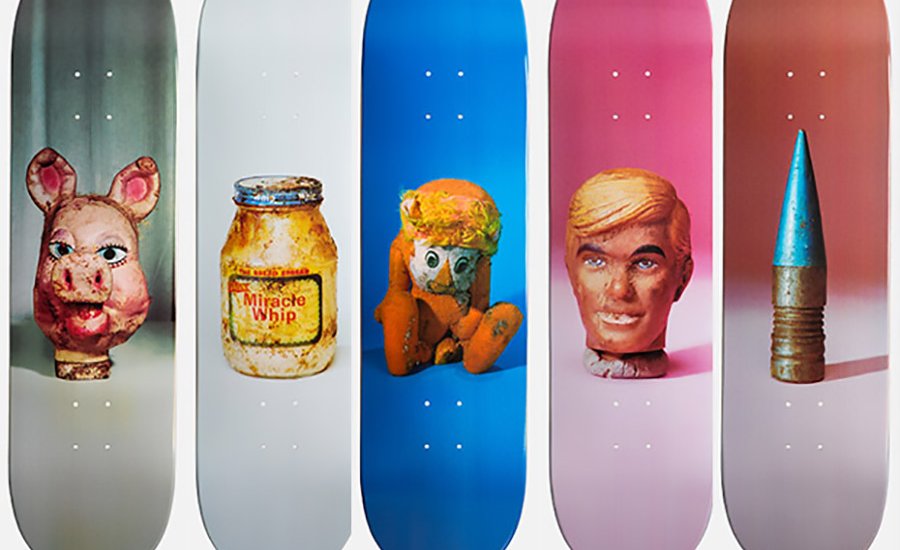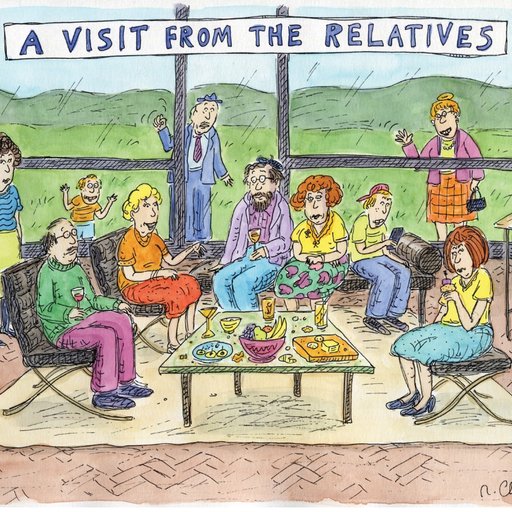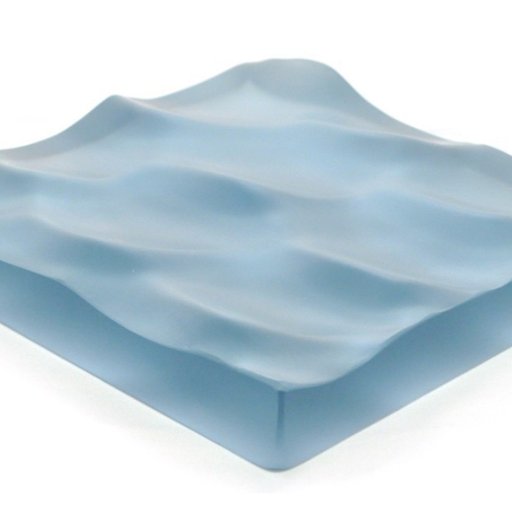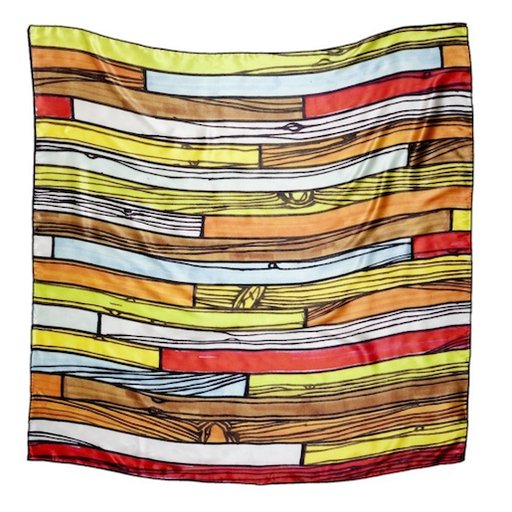What you need to know about these limited edition skateboard decks:
1. What do all of these dirty doll heads, bottles, and stuffed animals have to do with one another? Between 1972 and 1983, Paul McCarthy did a series of performances involving props like masks, bottles, dolls, stuffed animals, and pans, which he stored in trunks and suitcases when not in use. These trunks, which in 1983 were stacked and exhibited as sculpture, were eventually opened in 1991 when McCarthy methodically photographed each and every item individually. The photographs became known as the iconic PROPO series, which is featured here as limited edition skate decks.
2. If you can’t kick-flip, don’t fret. (To be honest, we don’t really know what a kick-flip even is.) You don’t have to be a skater to appreciate artist-designed skate decks, which add sculptural depth and gritty edge to any room. Hang one board as a stand-alone piece, or line up several in a row to tie the whole room together. On the other hand, if you can skateboard, power to you! (We’re jealous.) Add some hardware and some wheels and you’re ready to roll.
3. If you buy a McCarthy skate board, know that your money will go towards the building of a new skate school in Johannesburg. Proceeds benefit Skateistan, an NGO supporting youth empowerment in troubled regions through skateboarding. And, if putting your money towards productive social change isn’t enough, Artspace is offering these skatedecks on sale at $250 a pop! (They are normally $350.)
4. Having had solo shows at the Hammer Museum, the Whitney, the New Museum, MoMA, the Museum of Contemporary Art in Los Angeles, the Whitney Biennial and the Venice Biennale, McCarthy is one of the most difficult-to-stomach yet critically and commercially successful artists of recent decades. McCarthy’s critique of the United States’ consumer culture and entertainment-driven mass media is both series in its intent and comically absurd—so don’t expect to have his work go unnoticed by your houseguests!



























